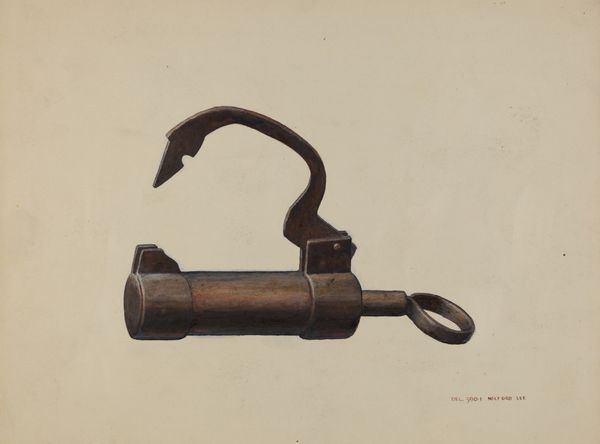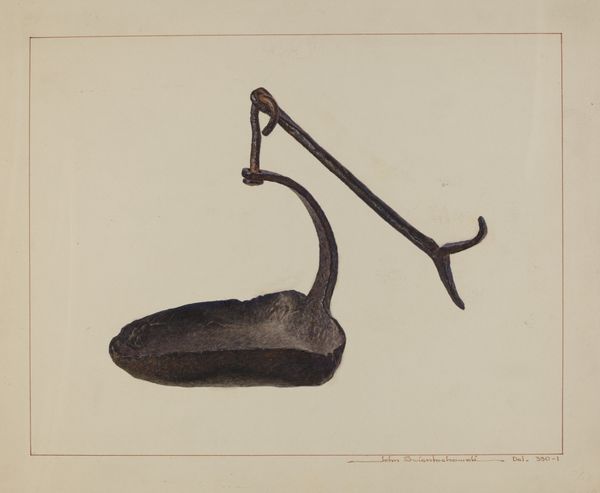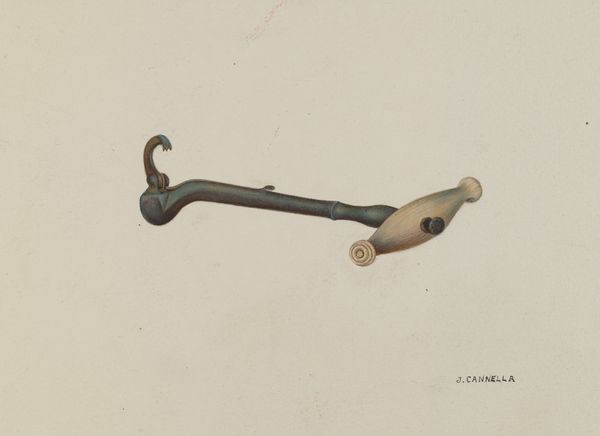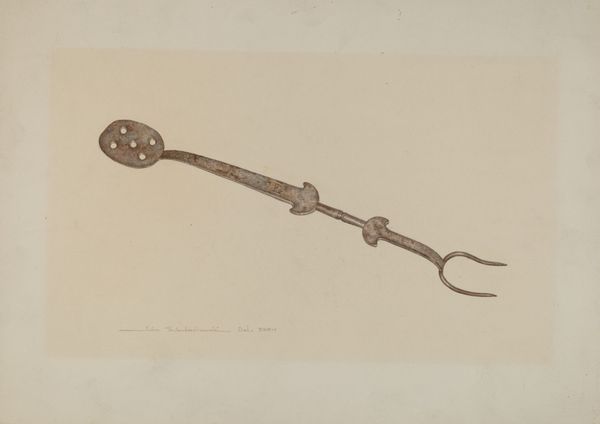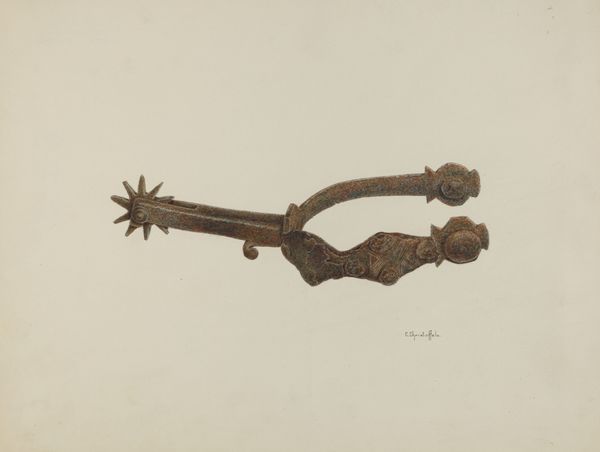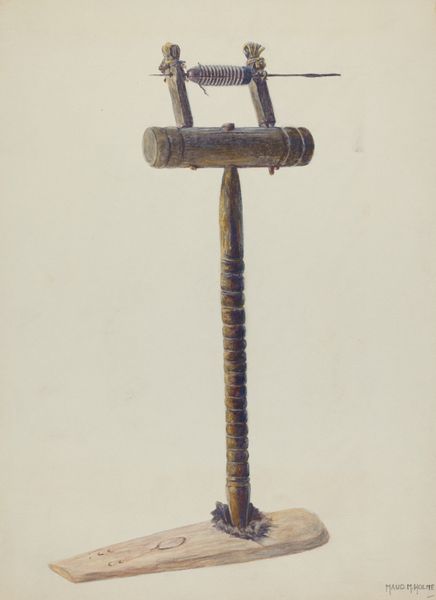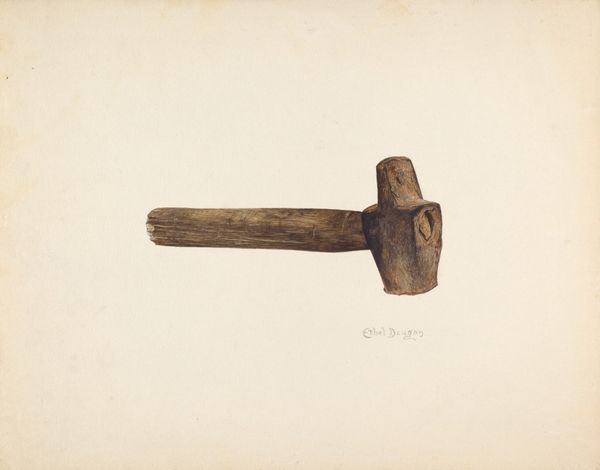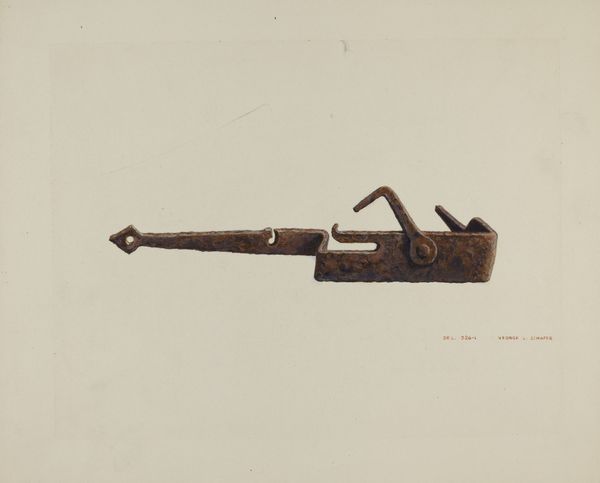
drawing, watercolor
#
drawing
#
watercolor
#
pencil drawing
#
underpainting
#
watercolour illustration
#
academic-art
#
realism
Dimensions: overall: 22 x 30 cm (8 11/16 x 11 13/16 in.)
Copyright: National Gallery of Art: CC0 1.0
Curator: What an interesting piece, presented in front of us. We are looking at "Turn Key Tooth Extractor," a watercolor drawing from around 1938 by Regina Henderer. What is your first impression? Editor: Oof. Just the sight of that antiquated tool sends shivers down my spine. It's a very realistic and, dare I say, clinical depiction. So unlike how one feels *during* extraction! Curator: Yes, she captured the object with unsettling precision. Henderer meticulously details the contours and the tarnished gleam of the metal. I'm particularly interested in the labor implied here, and the specific industrial design. What would extracting teeth in 1938 been like? Editor: I’m thinking about access. Consider that the production and ownership of a tool like this creates hierarchies of care and power. The dentist or traveling charlatan, their economic realities, and the economic desperation that required extractions as a source of care… It has real resonance. Curator: Absolutely, and while we're dissecting those economic implications, notice how the artistic choice to render it in watercolor adds a layer of unexpected delicacy to what is essentially an instrument of pain! Editor: The watercolor softens the inherent violence, almost… romanticizing it? Curator: In a way! I see it more as holding and investigating. And the realistic rendering allows the artist to explore and communicate its weight, not only physically but perhaps psychologically. To make a rendering like this seems like a process of careful holding of this object's power. What remains unspoken feels as vital as what’s explicitly shown, wouldn’t you say? Editor: I think the tool, its functionality, its intended use, says everything. Henderer focused intently on this manufactured object and gave its historical existence weight by recording the object through labor intensive work. But what really hits home is how it exposes that delicate balance of health, extraction and class. It hits you in the teeth, right? Curator: Indeed. It has been an unsettling exploration, but enlightening too, hasn't it? The image, seemingly straightforward, reveals complexities about health, class, labor and artistic perspective that linger long after our viewing ends. Editor: Agreed. The echoes of history, whispered through a utilitarian object so precisely rendered. We may never look at a watercolour in the same way.
Comments
No comments
Be the first to comment and join the conversation on the ultimate creative platform.

